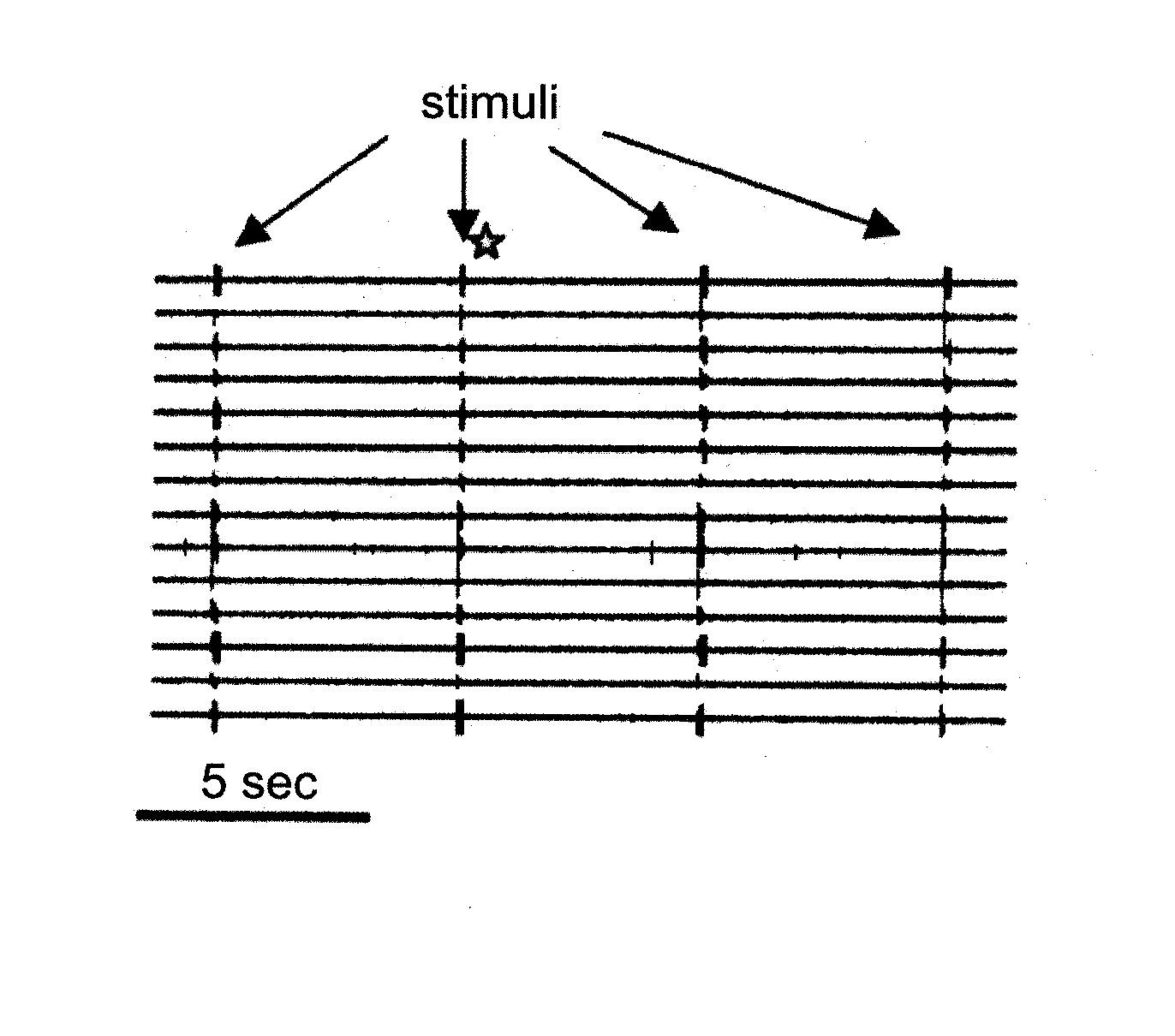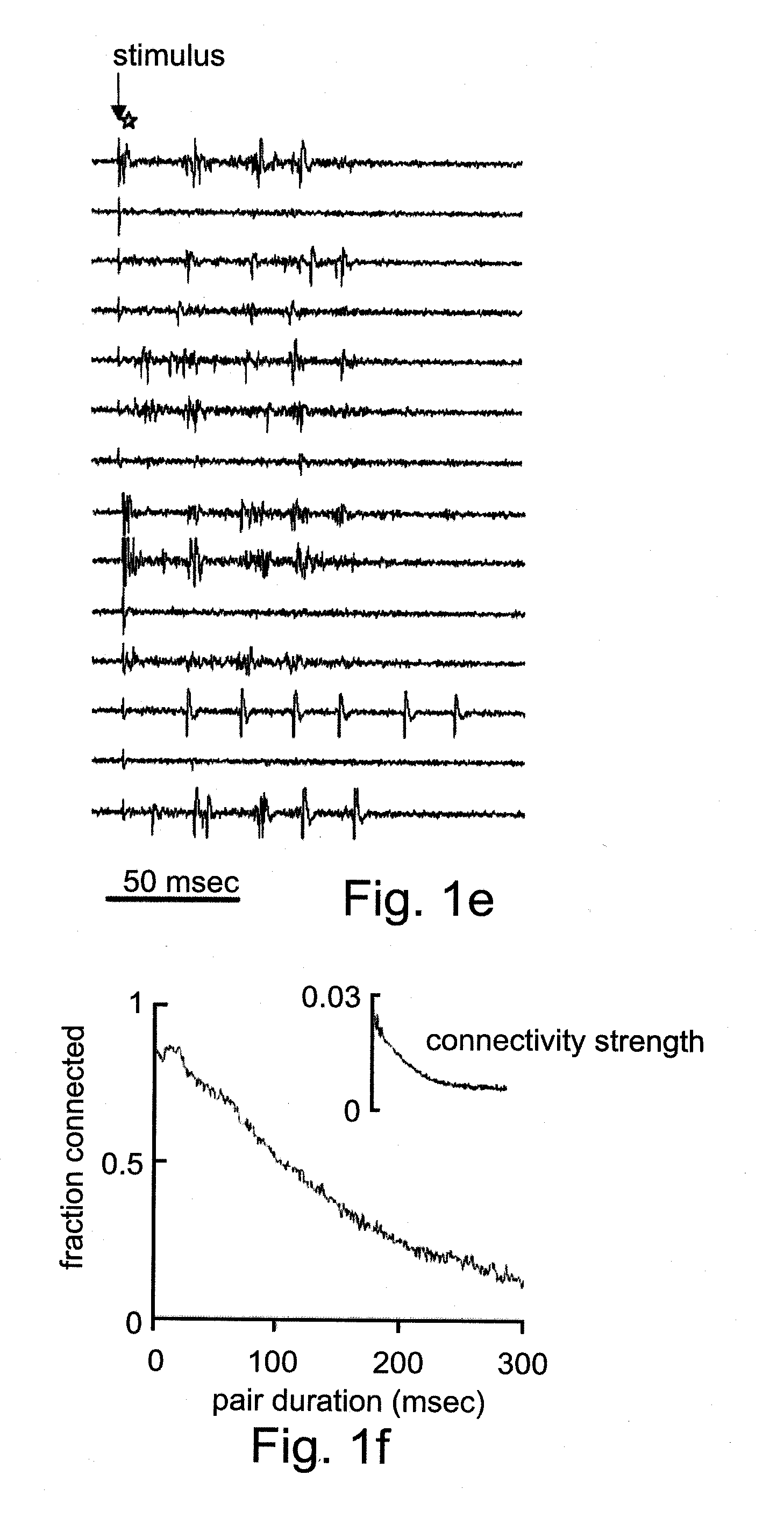Cells and methods utilizing same for modifying the electrophysiological function of excitable tissues
a technology of excitable tissues and cells, applied in the field of cells, can solve the problems of damage to cells and/or channels of excitable tissues, no longer supporting normal electrophysiological function, and severe effects on nerve signal function
- Summary
- Abstract
- Description
- Claims
- Application Information
AI Technical Summary
Benefits of technology
Problems solved by technology
Method used
Image
Examples
example 1
Cardiac Applications
[0237] Cardiac arrhythmias are rhythm disturbances that result from alteration of the electrophysiological substrate of the heart. These arrhythmias include bradyarrhythmias (slow heart rate) which result from abnormalities in impulse formation or conduction and tachyarrhythmias (high heart rate) which result from abnormalities in the electrophysiological substrate and which lead to the formation of tachycardia via abnormal foci firing at high rate or via formation of reentry circuits.
[0238] Cardiac arrhythmia often results from damage to the electrophysiological tissue substrate of the heart. By transplanting cells transfected with various ionic channels of specific and predetermined properties, the methods of the present invention enable one to modify the electrophysiological properties of heart tissue and thus repair such arrhythmias. Thus, the present invention can be used to either increase excitability to treat bradyarrhythmias or modify the electrophysio...
example 2
[0270] Diabetes Mellitus is a metabolic disease in which carbohydrate utilization is reduced while utilization of lipid and protein enhanced. Diabetes Mellitus is caused by relative deficiency of insulin, and is characterized, in more severe cases, by chronic hyperglycemia, glycosuria, water and electrolyte loss, and various organ damage causing significant morbidity and mortality.
[0271] Gap junctions and junction-mediated cell-to-cell communications are obligatory features of gland cells, regardless of their secretory products. Studies on pancreatic islets and acinar cells indicate that cell-to-cell communication via gap junction channels is required for proper biosynthesis, storage and release of both insulin and amylase. However, the endocrine and exocrine portions of the pancreas show opposite connexin (Cx) and coupling changes in relation to the activation and inhibition of their secretory functions. These differences may be accounted for by the expression of connexin...
example 3
CNS
[0278] Epilepsy
[0279] Epilepsy is a chronic disorder usually associated with some alteration of consciousness and characterized by paroxysmal brain dysfunction due to excessive neuronal discharge.
[0280] Astroglial cells contribute to neuronal maintenance and function in the normal and diseased brain. Gap junctions, formed predominantly by connexin43 between astroglias, provide important pathways which coordinate astroglial responses (Reuss et al, 2000, Glia May; 30(3):231-41). Neuronal-glial interactions play an important role in information processing in the CNS. Previous studies have indicated that electro-tonic coupling between locus ceruleus (LC) neurons is involved in synchronizing the spontaneous activity. Moreover, Spontaneous oscillations in the membrane potential were observed in a subset of glial cells. These oscillations were synchronous with the firing of neurons, insensitive to transmitter receptor antagonists and disrupted by carbenoxolone, a gap junction blocker...
PUM
 Login to View More
Login to View More Abstract
Description
Claims
Application Information
 Login to View More
Login to View More - R&D
- Intellectual Property
- Life Sciences
- Materials
- Tech Scout
- Unparalleled Data Quality
- Higher Quality Content
- 60% Fewer Hallucinations
Browse by: Latest US Patents, China's latest patents, Technical Efficacy Thesaurus, Application Domain, Technology Topic, Popular Technical Reports.
© 2025 PatSnap. All rights reserved.Legal|Privacy policy|Modern Slavery Act Transparency Statement|Sitemap|About US| Contact US: help@patsnap.com



